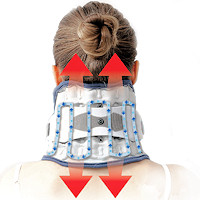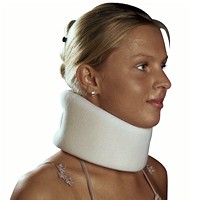Features Of Neck Pain And Findings Of Mechanical Neck Pain
Certain things will raise what are called red flags to the doctor and these features may indicate that the neck pain may be part of something that is more serious and require more attention than the features of neck pain due to mechanical causes.
 The presence of night pain, weight loss, fever and unrelenting pain may indicate that there is an infection or tumor. Other findings of concern are significant head and neck trauma and descriptions of a neurological problem, or other difficult neck conditions.
The presence of night pain, weight loss, fever and unrelenting pain may indicate that there is an infection or tumor. Other findings of concern are significant head and neck trauma and descriptions of a neurological problem, or other difficult neck conditions.
Many cases of mechanical or axial neck pain will be associated with symptoms of cervical radiculopathy (pinched nerve) and/or myelopathy (spinal cord compression). This is because many of the processes from degenerative disc disease that cause mechanical neck pain may also cause radiculopathy and myelopathy.
For the reasons stated above, it is always important to get an examination by a health care professional to details your particular features of neck pain in determination of diagnosis. In some cases, the neck pain may be severe enough to mask or render less noticeable any pain, weakness or numbness in the extremities and an examination would reveal this as opposed to just being asked a question.
Testing for neck motion should be standard. Motions are: forward and backward bending (flexion and extension), right and left rotation and right and left rotation. The doctor may use a special curved ruler called a goniometer or a measurement device may be attached to the head to measure, however, most will use a basic estimate without any instruments. This can determine the features of neck pain related to motions typically used in daily activities, and sets a standard for response to treatment.
Your head may also be moved without your active involvement. This is called passive motion and, along with the neck motion test described above, any motion that reproduces pain should be noted and can give clues to structures involved and help determine further testing methods.
The doctor or examiner may press on your head to see if there is any pain from nerve root compression.
 Neck Traction Devices Neck Traction Devices |
 Cervical Pillows Cervical Pillows |
 Neck Support Collars Neck Support Collars |
You should always be direct and honest about your descriptions. The doctor will suspect the relation of your pain to possible anatomical causes if you are overly sensitive to light tough in random locations, a change in response when the same test is performed later in the examination. Jerking motions in response to muscle testing is also suspect since these motions require more strength than holding a stable position. The doctor will also observe your demeanor and overall expression which should match the amount of pain you are experiencing.
A 2018 study in the Journal of Bodywork & Movement Therapies found that computer workers with features of mechanical neck pain from prolonged and awkward postures responded to exercises after 4 weeks.
The next part focuses on the radiographic examination for mechanical neck pain; will x-rays, MRI or CT scan be necessary?
Mechanical Neck Pain | Radiographs Neck Pain | Cervical Strain | Cervical Degenerative Disc Disease | C4 Radiculopathy | Failed Neck Surgery | Rheumatoid Neck Disorders | Shoulder Problems | Mechanical Neck Pain Summary
